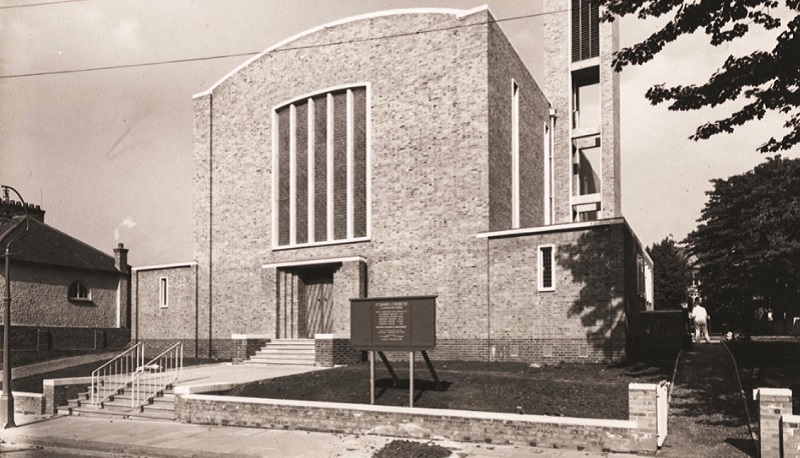Opening doors to the treasures of St James
When we think of a church, the first image to come to mind might be a gothic or mediaeval building with pointed arches and a spire.
More difficult styles to associate with religious architecture are modernism and expressionism, writes Claudia Lee.
An exhibition is showing how one architect reimagined how churches could be designed to create something “radical”.
St James’ Church in Park Hill, Clapham, was built in 1829. But, after it was destroyed in the Battle of Britain the building was completely transformed by Nugent Cachemaille-Day.
Mr Cachemaille-Day who lived from 1896 until 1976, was an English architect whose unique style revolutionised 20th century churches across the country.
St James’ Church is opening its doors to welcome visitors to Treasures Revealed an exhibition that documents the building’s inspiring story, as well as the remarkable work of its architect.

Treasures Revealed, has been created and curated by Jim Grover, an award-winning Clapham-based social documentary photographer and will show from September 16 until October 15.
Mr Grover, said: “The creativity of our church architect, Nugent Cachemaille-Day, is remarkable and I know that visitors will enjoy seeing examples of bold and radical churches that he designed, including our own which is one of the finest examples of his post-war work.”
The exhibition will be split into two parts, starting with The St James’ Story which covers the history of the church site from 1829 until 1958.
The story will be told through a collection of vintage photographs, maps, prints, architect drawings, documents as well as other archive materials.

Everything from its original construction in 1829, through to it being destroyed by bombs in 1940, and the many challenges confronted by the Parish and architect in the 1950s to rebuild the new St James’ Church will be covered.
Part two takes a closer look at the architect himself.
The work of architect Nugent Cachemaille-Day, will display more than 75 photographs of 24 of the architect’s churches – built either side of the Second World War.
A leading example of Expressionist architecture, Mr Cachemaille-Day’s work includes one of the earliest Modernist Churches in England, the Church of St Nicholas, Burnage in Kingsway, Burnage, Manchester.

His work was innovative and often seen as ahead of his time.
The churches he designed were experimental, distilling grand and traditional church designs into more simple structures of heavy brickwork with interchanging arches and open halls.
The exhibition will also show a timeline of the 24 churches from 1932 to 1963, to show visitors how Mr Cachemaille-Day’s work evolved over time – rarely constrained to one style.
This will be the first time that an exhibition of his lifetime’s work has been created and presented on such a scale.
Reverend Kit Gunasekera, Vicar of St. James’ Church, said: “I am so pleased to be opening our doors, once again, to welcome in our local community and to reveal and experience the fascinating and inspiring story of our beautiful church building.”
Picture: View from the West Front and main entrance of the new St James’ Church building when it was opened on September 13, 1958. Picture: Treasures Revealed, Jim Grover



